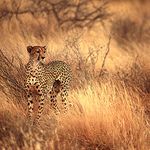- Home
- Lightroom Classic
- Discussions
- Re: Sharpening for large megapixel cameras and doe...
- Re: Sharpening for large megapixel cameras and doe...
Sharpening for large megapixel cameras and does it therefor apply to panoramas too?
Copy link to clipboard
Copied
To those with large megapixel cameras (ie. 60+ mgapxl) did you find that you need have a higher amount of sharpening to get the same sort of sharpness as you would from your lower 20+ megapixel cameras? (I ask because I was reading a Scott Kelby book who suggested this course of action) — If so, this then leads me to ask does that mean my panoramas (with more detail than a standard standalone photo) will also need higher amount of sharpening too? cheers
Copy link to clipboard
Copied
Interesting question. I probably have a wrong answer, but I will express my opinion based on what I have done. I use a smaller camera, 20.5 megapixels. The largest I have done in panoramas is one that includes 32 images (four horizontal rows, eight vertical columns). I sharpen the images before I create the panorama, applying the same amount of sharpness to all images. After the panorama has been created I usually find that the sharpness is pretty consistent. This may not be the best or proper way of doing it, but it has worked in my case.
Copy link to clipboard
Copied
It's not logical that you would sharpen a stitched panorama differently than how you would sharpen the individual images. After all, the panorama still comes from the same camera, the same lens, and the same sensor. The reasons why you sharpen a high resolution camera photo (smaller sensor pixels, small camera movements have greater impact, lens unsharpness has greater impact) do not apply here.
Copy link to clipboard
Copied
My answer is no, not for the original file. I agree with Johan.
Any changes in sharpening are related to scaling and resampling the original. Sharpening should be applied after resampling.
This works on pixel level. You can only assess sharpening at 100%. Then it doesn't matter how many more pixels are outside your present screen view. However - if you apply sharpening on a zoomed out image, you will get a false preview of the sharpening effect, so it may appear as if you need more.
But the point is - for practical use, the image will almost always be downsampled. And then you need different sharpening parameters depending on final size.
Copy link to clipboard
Copied
The amount of sharpening required depends on the sharpness of the sensor and the lens.
I have a Nikon Z 7 and a Fuji GFX 50S that both have a resolution of 8256 pixels on the long side.
The Fuji needs much less sharpening than the Nikon because it has a sharper sensor and sharper lenses.
The sharpening you do in Develop is designed to compensate for softness in the digital capture. (Capture sharpening)
The image should look sharp, but not too sharp. If in doubt, sharpen less.
Always apply sharpening at 100% view, where one image pixel is represented by one screen pixel. Any other view will be inaccurate and misleading because the image has been scaled. (if you have a 4k or higher monitor, use 200%)
Use appropriate output sharpening when exporting.
Output sharpening compensates for softness caused by resampling, and in the printing process.
Note that there are different options for screen and print.
Copy link to clipboard
Copied
Yes, lens sharpness is obviously a factor. With a 60MP+ sensor, the quality of your lenses is crucial. You can't just put any lens in front of such a sensor.
For my 60MP Sonys, I only use prime lenses. No zooms can do that sensor justice. My favorite is still the Zeiss 35/2.8, small and lightweight, but resolving right down to every sensor pixel.
Copy link to clipboard
Copied
I agree completely about prime vs zoom lenses, with one exception, the Fuji GF 35-70 f/4.5 - 5.6 zoom.
It matches the sharpness of the 45 and 63mm primes across the frame.
It is reported to perform equally well with 100 MP cameras.
